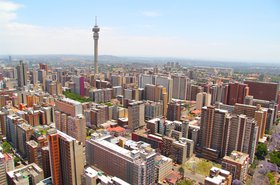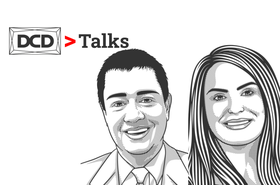The world is changing at breakneck speed. The combination of the Covid-19 pandemic, the War in Ukraine, the inflation boom, the cost-of-living crisis, the climate emergency, and supply chain breakdowns have left the world economy in a very different state to that with which the decade began. Where does this leave the data center industry, and what is the way forward? We spoke to Steven Lim, senior vice president, Marketing and Product at NTT Global Data Centers about how the industry as a whole can adapt, move on, and prosper in this ever-changing economic climate.
Post-pandemic slowdown?
We start by looking at the well-documented skills shortage in the data center industry. After a hiring boom during the 2010s, we’ve seen most of the Big Tech companies shedding staff in huge quantities. In a shrinking labor market countered by a growing demand for data centers, how do operators overcome that juxtaposition and get the right skills into the right positions?
“We've seen massive consumption of data centers since the onset of Covid. One of the questions is, will we see a slowdown in that? Have they hit a point of stasis? Then combine it again with contractions in other parts of the business – will they still need the same amount of data center capacity? These are all factors that we're paying close attention to.”
Of course, Lim explains, the threats to data center growth go beyond the server farm wall – real-world changes in the digital age have a knock-on effect on the data center market:
“If companies are doing significant layoffs, does that slow down the demand for things like collaboration tools? Will that slow down future demand or growth in the collaboration products, because there are fewer employees? If so, hyperscalers might slow down their growth in data center capacity to support those cloud-based products and that creates a slower demand in our curve.”
Data center dependence
Although the growth has been meteoric, video conferencing isn’t a huge chunk of data capacity. Lim points out that, where one use case shrinks, other bigger ones are growing in their place, so rumors of the death of the data center are likely premature:
“There's a good chance that we won't see any slowdown in growth because there are so many other things dependent on the data center. Now, almost everything we all do centers around the movement of information, which requires data centers – take self-driving cars, you have a ton of information that needs to be moved very quickly. Then there are streaming services – when we were all stuck at our houses for an entire year, streaming was off the charts. As that plateaus, there are so many other technologies that are coming to fill that space.”
Taking care of those taking care of business
We’ve now moved from a period of mass recruitment to mass layoff, but while businesses focus on those going through the out door, it’s easy to miss the realities for those left behind – often overworked and lacking the mentorship and development opportunities that make for company loyalty and can even magnify the talent drain further:
“As an industry, we do a very poor job of putting together career paths for our teams. Often, the fastest way to get promoted is to get poached by another company. The competitor takes our training and pays them a little bit more, and we lose some of our better people. Then, whether poached or laid off, the expectation is always, ‘Person A will pick up all of that extra work because they’re still here’. Well, Person A is already maxed out. So how do we deal with that? I do worry that we're not thinking about the impact on employees left behind – getting laid off is no fun, but suddenly having to do three people's jobs isn't exactly a party either.”
Attracting talent behind the scenes
However, there’s another issue with recruiting talent to the data center industry – a lack of understanding of what exactly goes on behind those concrete facades, and a lack of the “cool” factor abundant at the front end of the industry. So what do we do about that?
“There are two layers. Firstly, how do we convince people that the data center industry is interesting because to be slightly uncharitable, we build buildings, and then we are… Well, we are landlords. Boil down what we do and to some, it may be seen as a boring job. The other challenge is that it's slow. Everyone's got their planning and method and is working on three and five-year growth plans.
“For me, the only way you can inspire and build and lead is to be able to focus on the individual. The challenge is that it’s all too easy for businesses focused on the bottom line and long-term growth to run counter to that – making decisions that don’t offer continuous opportunities to the individual – balancing those two can be, at times, very, very difficult, but it’s important to match business needs with offering employees a role that engages, enriches and offers a path to growth.”
Investing in data centers - still a good bet?
Like the rest of the world, the data center industry is beholden to some tough economic realities that have seen it grow exponentially, but now, as its attraction as a sure-fire money-maker recedes, and money is thinner on the ground, we could be in line for some arrested development in the coming years, regardless of the demand for services:
“One of the things that have fueled the growth in data centers is the fact that so much private equity money was coming into the industry, because money was so cheap that you could pump in significant amounts and get a very steady return.
"Now, that money is much more expensive. Those returns, in some cases, have evaporated. What will happen with data center investments going forward? That's one I don't have an answer for, but it could have an impact on the speed of development, particularly with smaller providers.”
Tools for the job
Another economic challenge comes from supply chain shortages. Whether war, Covid, or a blockage in the Suez Canal, there are reasons why, right now, the supply chain is overstretched, and the effects on development go way beyond the well-documented shortage of microchips:
“The silicon shortage is one of the key things, but for us, it's even more basic than that – there are building material shortages. We don't have enough steel for some of our projects, and the lead time has gone way, way up. There aren't a lot of good answers. If you've got scale, you can augment or offset because you can order much larger volumes, but I don't know how some of the smaller players are dealing with this. I'm not sure what your options are other than to plan ahead ‒ which is not much of a plan.”
Green won’t wait
Beyond all these challenges, the new elephant in any room right now is sustainability. Data centers use significant amounts of power and the pressure is on to find ways to reduce emissions and protect the environment. The vast majority of people believe that these changes are vital to the future of the planet, but lest we forget, this transition, too, costs money. Lim emphasizes that this isn’t a reason not to make inroads, right away:
"I don't think there's a wait-and-see approach. I don't think that's an option. I don't think that's even on the table. The cost of power continues to go up in almost every market around the world and in a lot of those same markets, there's also a shortage of power, so some new developments, for data centers in particular, are being delayed, because they can't get the power commitments from energy providers. Do we need to look at alternatives? Yes. Are there any good alternatives out there today? Some, but they are often not cost-effective, and not consistent from market to market.”
So what precludes the current alternatives from being the silver bullet to sustainable data storage?
“Part of it is, the cost doesn't make sense. The scale is just not feasible. Everybody wants these green, beautiful solutions. But the minute you tell them they cost more money, they don't want to pay for it. We are constantly looking at alternatives – microgrids, solar, wind, water and so on, but there is no ubiquitous answer. As the cost of traditional power sources continues to go up, we might see a tipping point where you see more broad-based options and ideas, but I would predict we're still years away from that.”
Bright people. Bright ideas. Bright future
Listening to some of Lim’s assessments of the state of data centers in 2023, it would be easy to assume that we’ve reached the end of a purple patch. But his final thoughts are more positive – there’s a long and bumpy road, but that doesn’t mean that the direction is wrong, and by working smarter, we’ll reach our destination:
“I think the overall message is probably just to keep going, and focus on the long term. Everything that we are talking about, both the challenges and opportunities in the data center industry are not small nor simple – and it can be overwhelming. A lot of the solutions just aren't there yet, but it's getting there.
“The new generation of data center workers, people who create things, invent new ideas, and look at it from a new perspective are going to be key to leading the industry forward and solving many of these problems and finding new opportunities. People, then are the heart of both our current industry, and our future path and success moving forward.”
More from NTT Global Data Centers
-

NTT Global Data Centers takes the main stage
Move over RagingWire, NTT is here
-

Sponsored Connecting the planet for a more sustainable future
Digitization, communication, collaboration: the three key pillars toward achieving a more sustainable future
-

Sponsored Africa rising: Supporting the Sub-Saharan Africa of tomorrow
With the rapid economic growth of Sub-Saharan Africa having catalyzed a veritable tsunami of digital demand, the continent’s need for world-class data center facilities has never been more compelling

